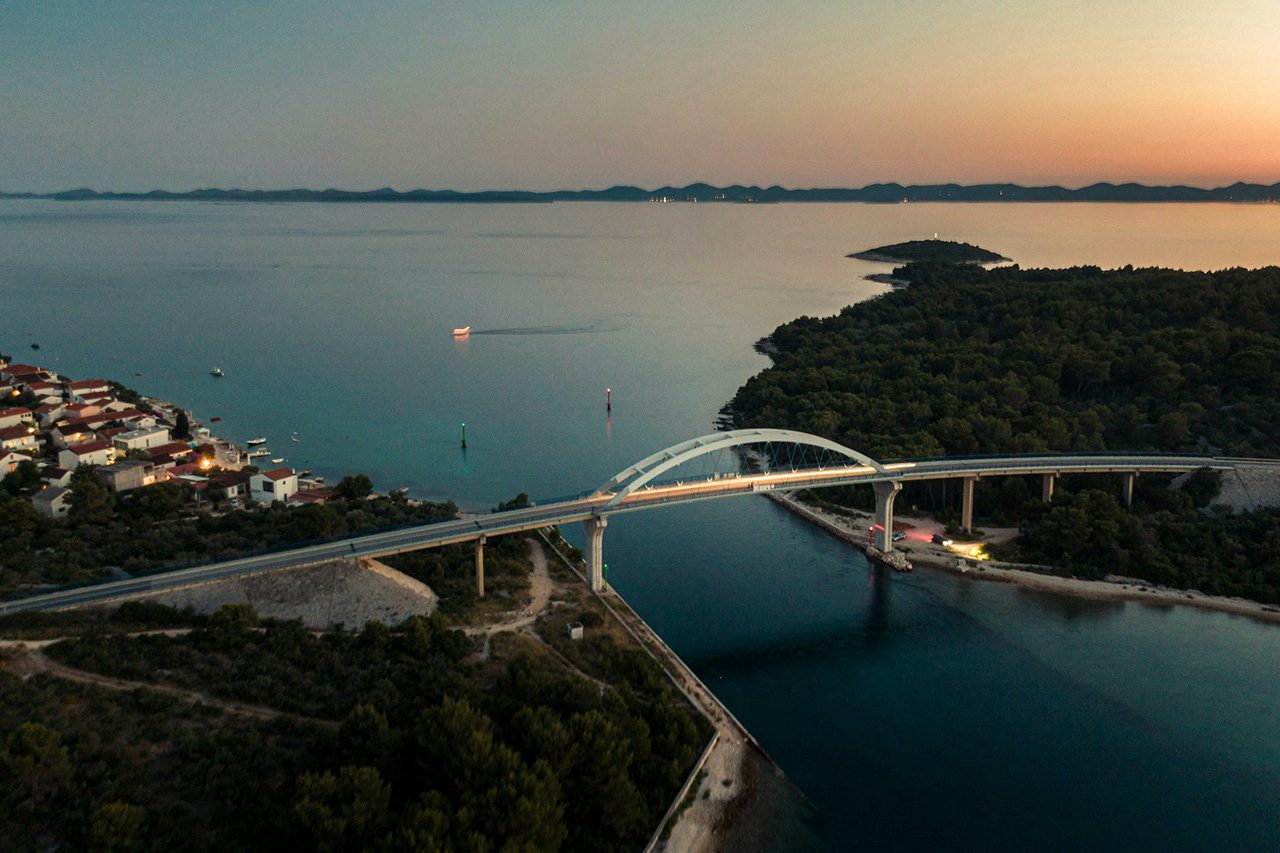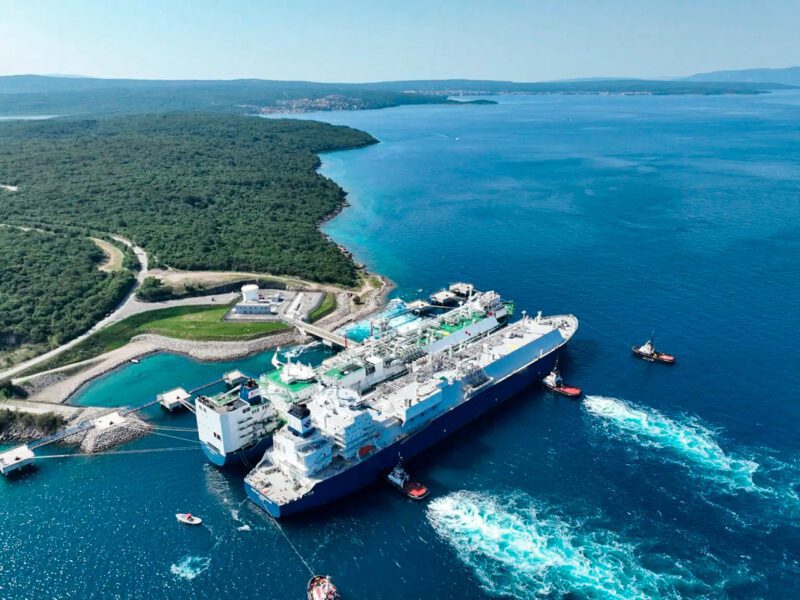Public Policies and Investing for Good
What is and is not needed.
How citizens, scandals, and startups are powering a quiet energy revolution

How shifting bureaucratic tides and citizen-led innovation are powering Croatia’s green energy transition — and positioning the country as a regional leader.
When many people think of Croatia, images of a pristine Mediterranean holiday destination, an underdog national football team, and “that place from Game of Thrones” often come to mind. While these associations are not inaccurate, the country is actively working to redefine its global image — prioritizing the growth of an emerging tech and manufacturing sector, promoting sustainable tourism, and launching bold new green energy initiatives.
Despite its achievements, Croatia frequently flies under the radar in conversations around renewable energy. With a population of just 3.8 million and a complex, often turbulent history, the country is still widely seen as peripheral in broader geopolitical and economic narratives. Modern Croatia only achieved independence in the mid-1990s, following a brutal war with Serbia. In a scenario reminiscent of Ukraine, the conflict destroyed approximately 25% of the national economy, and in its aftermath, the country found itself mired in a power vacuum marked by corruption and governmental dysfunction.
Since gaining independence, Croatia has struggled with a deeply entrenched bureaucracy that continues to obstruct reform and stifle innovation. Much of this institutional inertia is a lingering legacy of the Yugoslav era, during which ideological factions within government consolidated power for personal gain. Today, many officials remain disincentivized to pursue meaningful, systemic change, as they continue to benefit from these longstanding power structures.
One area where these challenges are acutely felt is in the governance of Croatia’s marine and coastal resources. Illegal activities—such as overfishing, unregulated development, and environmental violations—are often met with inadequate oversight, owing to poor coordination between agencies, an under-resourced monitoring system, and, most critically, weak enforcement and accountability mechanisms.
Since gaining independence, Croatia has struggled with a deeply entrenched bureaucracy that continues to obstruct reform and stifle innovation.
This dysfunction is rooted in the socialist legacy of Yugoslavia, where corruption was pervasive, resources were routinely diverted from Croatia to Serbia, and bureaucratic red tape flourished. Unfortunately, vestiges of this era remain visible in Croatia’s contemporary political culture. In late 2020, for instance, Dragan Kovačević, then-head of the state oil transport company JANAF, was implicated in a high-profile scandal involving secret lockdown gatherings at a private club in Zagreb. Reports alleged the presence of illicit payments, political figures from both major parties, and even former President Stjepan Mesić and sitting President Zoran Milanović.
These incidents echo the patterns of the past, marked by systemic complicity or, at the very least, a troubling degree of tolerance among those in power. The result is a precarious governance landscape in which many public officials find themselves in a catch-22: unable to block progress outright, yet capable of delaying it—lest it undermine their positions of influence.

The house at 9 Slovenska Ulica in Zagreb, where Kovačević operated his secret club frequented by Croatia’s political and economic elite. Source: Ronald Goršić/cropix.
As Croatia advances its role as a diplomatically engaged, EU-aligned thought leader in Eastern Europe and the Balkans, it is simultaneously experiencing a surge in private-sector innovation and renewable energy development. Much of this progress has occurred organically, driven by responsible entrepreneurship and taxpayer-supported initiatives, though some can be attributed — albeit infrequently — to effective government policy.
Private enterprise has long urged both national and local administrations to streamline bureaucracy and help unleash Croatia’s latent economic potential. Despite persistent institutional hurdles, a number of visionary entrepreneurs have made remarkable advances. Among the most prominent is Mate Rimac, the celebrated founder of the electric vehicle company Rimac Automobili and current CEO of Bugatti-Rimac. What began in Rimac’s garage in the small town of Sveta Nedelja has grown into a company with more than 1,500 employees, a landmark merger with luxury automaker Bugatti, and a forthcoming autonomous vehicle — Rimac’s robotaxi — slated to hit the market next year.
Another standout in Croatia’s emerging green economy is Earthbound, an eco-conscious sneaker brand whose shoes are composed of 97% sustainably sourced materials, including eucalyptus, hemp, and cork. The company exemplifies a new wave of environmentally responsible innovation that is helping redefine Croatia’s economic and ecological identity.

The 300,000 plus square foot facility where the Verne robotaxi will be made is slated to be completed by end of year creating 400 permanent jobs. Photo courtesy of Verne
At the state level, progress toward sustainability has been uneven, yet recent years have seen a discernible shift toward green energy, spurred by a growing wave of policy momentum and strategic alignment. While pressure from the electorate has played a role, the more decisive catalyst appears to be Croatia’s enhanced international stature — bolstered by its 2013 accession to the European Union and, more recently, entry into the Eurozone. These milestones have prompted a national recalibration aimed at long-term economic stability and integration into broader European energy and policy frameworks.
As Croatia advances its role as a diplomatically engaged, EU-aligned thought leader in Eastern Europe and the Balkans, it is simultaneously experiencing a surge in private-sector innovation and renewable energy development.
In this context, Croatia has positioned itself as a regional energy leader in Southern Europe and the Balkans. Notable initiatives include the Krk Island LNG (Liquefied Natural Gas) terminal, which has helped EU countries diversify energy sources and reduce dependence on Russian gas. Another key development is the wind farm in the Lika-Senj region, made possible through Chinese investment under the Belt and Road Initiative — a rare example of successful collaboration across geopolitical blocs.
As the EU reevaluates its internal cohesion in the face of shifting global power dynamics — exacerbated by former U.S. President Donald Trump’s tariff threats and the rise of BRICS nations — Croatia’s regional leadership in energy offers both strategic value and a blueprint for small states navigating multipolar complexity.

The floating LNG terminal, stationed in the Omišalj municipality on the island of Krk, Croatia; Photo courtesy of LNG Croatia.
Much of the Croatian character is rooted in a deep reverence for family and local community—a symbiotic relationship in which one’s environment is granted the same care and respect as loved ones. This cultural ethos extends to a deeply ingrained aversion to waste, particularly in relation to essential resources like food. Shaped by generations that came of age outside a consumerist paradigm, these values have laid fertile ground for the rise of innovative, community-driven energy solutions.
Nowhere is this more evident than along the sun-drenched Adriatic coast, from Istria in the north to ever-sunny Dalmatia in the south. This region, among the sunniest in Europe—with some areas recording over 3,000 hours of sunshine annually—has become a testing ground for citizen-led energy reform. Despite its solar potential, progress has been sluggish, largely due to a burdensome permitting process that can take years to navigate.
Croatia’s regional leadership in energy offers both strategic value and a blueprint for small states navigating multipolar complexity.
Widespread public distrust in government institutions has spurred the growth of grassroots energy initiatives, which are often more agile, transparent, and effective in delivering benefits to local stakeholders. Among the most promising developments is the rise of energy cooperatives, now totaling 17 nationwide. On the island of Cres, for example, residents successfully crowdfunded a citizen-owned solar power plant, operated through the cooperative Apsyrtides.
For these initiatives to scale meaningfully, however, government policy must continue to evolve. A crucial step would be streamlining bureaucratic processes — such as reducing the paperwork required for individual solar producers from 66 separate documents to just three — thereby enabling a faster, more equitable transition to renewable energy.
Along Croatia’s sun-drenched coast, many islands have long embraced car-free living as a norm, fostering a culture of environmental mindfulness and tranquility. On the island of Zlarin, that ethos took a bold step forward in 2018 when it became the first island in Croatia to go plastic-free—eliminating more than 150,000 single-use plastic items in its inaugural year. The initiative, spearheaded by the organization Za Zlarin Bez Plastike (“Plastic-Free Zlarin”), partnered with local businesses to replace disposable products like bags, straws, and cups with reusable alternatives, cultivating a circular, community-based approach to consumption.
For these initiatives to scale meaningfully, however, government policy must continue to evolve.
This reverence for nature is palpable throughout the Adriatic—where the ambient soundtrack of crickets, breaking waves, and distant laughter shapes a landscape optimized for relaxation and elevated consciousness. But the commitment to preserving this fragile ecosystem extends beyond aesthetics, encompassing both noise and light pollution.
In Dubrovnik, rolling suitcases have been banned due to the disruptive clatter they produce on the city’s ancient stone steps. Meanwhile, on the remote archipelago of Lastovo — recognized as a dark-sky preserve — the local municipality has installed ecological public lighting, cutting electricity consumption by 50% while safeguarding the night skies from artificial light intrusion.

A billboard set up by the association Za Zlarin Bez Plastike demonstrating how plastic waste harms the ocean and what steps citizens can take; Photo by Mike Elm.
While current trends signal meaningful progress, Croatia must guard against slipping back into the bureaucratic inefficiencies that have historically impeded reform. The path forward depends on cultivating a tripartite synergy between government, responsible entrepreneurship, and community-based organizations — each playing a vital role in the country’s sustainable transformation. Although change remains gradual, the trajectory is promising. There is ample reason for optimism — not only for Croatia’s future, but for its evolving role as a model of resilient, locally grounded sustainable development.
Related Content
Comments
Deep Dives
RECENT
Editor's Picks
Webinars

Featuring
Elizabeth Boggs Davidsen
CEO of GSG Impact
May 8 - 12:00 PM EST
News & Events
Subscribe to our newsletter to receive updates about new Magazine content and upcoming webinars, deep dives, and events.
Become a Premium Member to access the full library of webinars and deep dives, exclusive membership portal, member directory, message board, and curated live chats.
At Impact Entrepreneur, we champion fearless, independent journalism and education, spotlighting the inspiring changemakers building the Impact Economy. Diversity, equity, sustainability, and democracy face unprecedented threats from misinformation, powerful interests, and systemic inequities.
We believe a sustainable and equitable future is possible—but we can't achieve it without your help. Our independent voice depends entirely on support from changemakers like you.
Please step up today. Your donation—no matter the size—ensures we continue delivering impactful journalism and education that push boundaries and hold power accountable.
Join us in protecting what truly matters. It only takes a minute to make a real difference.
0 Comments